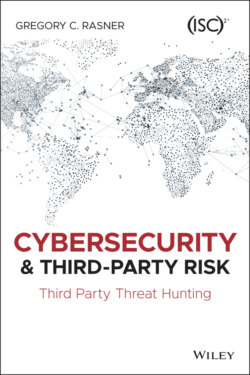Читать книгу Cybersecurity and Third-Party Risk - Gregory C. Rasner - Страница 33
The Third‐Party Breach Timeline: Target
ОглавлениеThe discussion of the five phases for a breach can be best demonstrated by using Target as an actual example. In December 2013, it was announced that around 70 million payment card data records for Target's shoppers had been stolen through the point‐of‐sale (POS) system. In addition, over 11 GB of data was exfiltrated. The anatomy of how it occurred illustrates both the vulnerability of third parties and how an attacker goes through the five phases.
Research: HVAC vendors were likely targeted as this third party is used as a backdoor to gain access. An internet search could have produced information about how Target works with its vendors and likely would've shown vendor portals. Also easily found is the Microsoft study done on how Target uses its virtualization software, the MS Domain Name Server (DNS), its software for managing system configurations (Systems Center Configuration Manager [SCCM]), and other important intel about internal systems.
Analysis then shows a phishing email was sent to Target's HVAC vendor, Fazio Mechanical, with malware that was a password‐stealing bot. It is suspected that this software sent stolen credentials to the attackers.
Intrusion: Using the stolen credentials from Fazio Mechanical, attackers logged in to Target's systems via a vendor portal. Because they stole valid credentials, no alarms were sent. This type of credential from the vendor gave them the continuous access to make repeated attempts at the next steps for the breach.
Lateral Movement: Using the valid user credentials and a solid beachhead (i.e., a foothold within the target network), they now could leverage much of their research into what type of systems the target had running internally to the attacker's advantage. Along with their tools for hacking, knowing that they had SCCM and Microsoft's DNS, among other products, would have given them an advantage in looking for vulnerabilities to exploit. In addition, attackers likely would have deployed common network scanning tools to create a map to help them decide the next best steps for the lateral movement.
Privilege Escalation: As attackers moved laterally within the Target environment, the objective would be to find privileges that worked with the POS system. As they exploited these known vulnerabilities on the Microsoft and other systems they had identified in their reconnaissance, intrusion, and lateral movement phases, that data was leveraged to elevate themselves to be able to perform the last step.
Exfiltration: The malware was distributed to the POS machines in such a fashion as to suggest it was an automated update, indicating that the attackers had attained privileged access to the central system that updates those machines. Because the malware was custom written, virus scanners did not have their signature to detect it. As the payment cards were swiped, their data was stored in a system configuration file that was shared over well‐known ports. This data collection from all the different POS machines was then sent to a compromised server internal to Target's network. The data was then retrieved via a number of electronic “drop” locations worldwide. The Target team in India notified the Minneapolis team of the attack, but they took no action on the warning.
The breach itself took place from November 27 to December 15, 2014. Obviously, we do not know how long the research phase took for the attackers. What the timeline does show is how methodical and clever attackers can be when attempting to ambush a victim. In this case, leveraging the available public information not only got attackers access to the vendor portal, but also gave them candidates from the vendors so they could select one with lower access standards. This breach cost Target hundreds of millions of dollars in direct damage, lost revenue, and reputational costs. Many C‐level and lower‐level employees lost their jobs, including the CIO and CEO, while the board of directors was threatened with removal as well.
